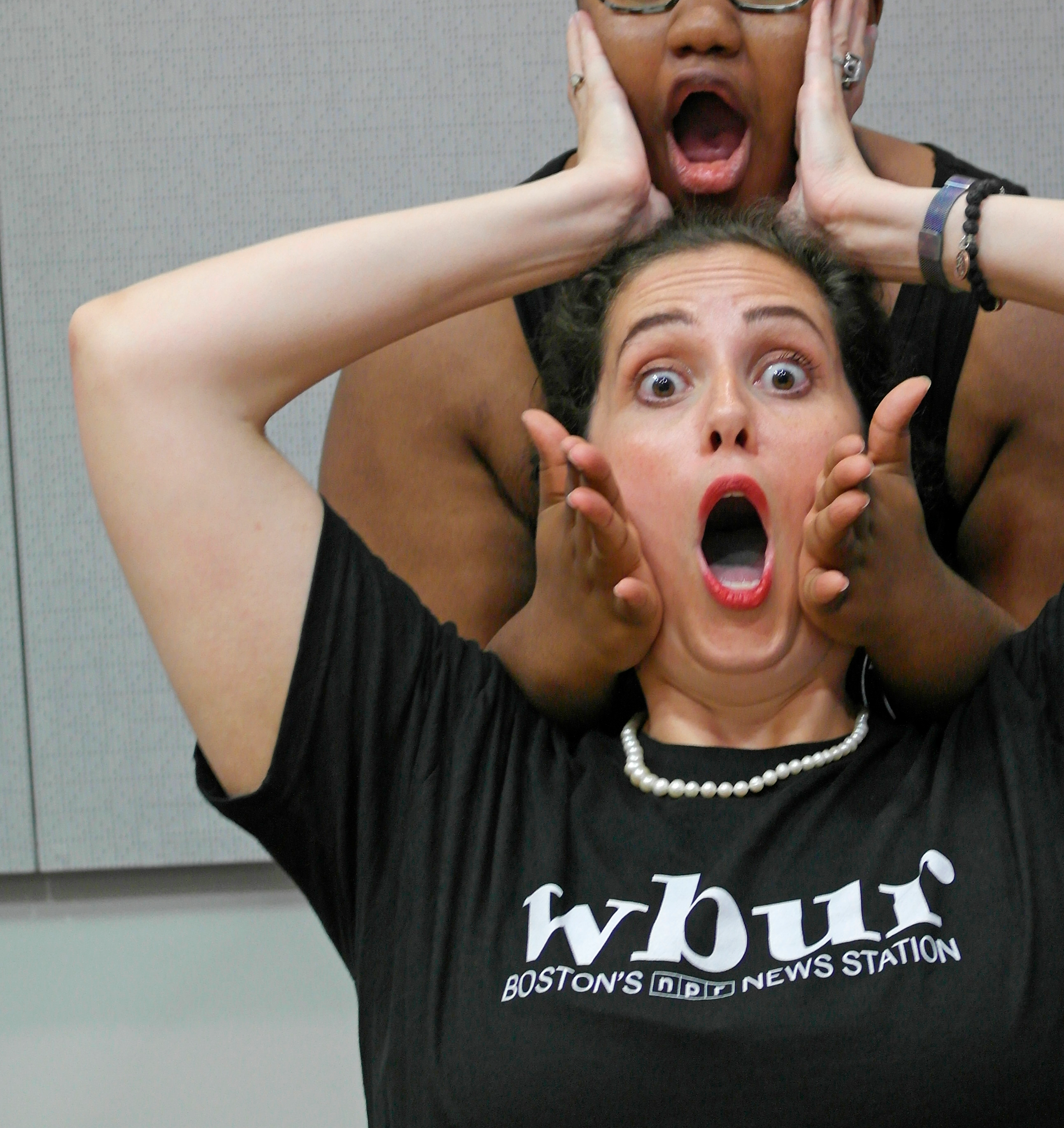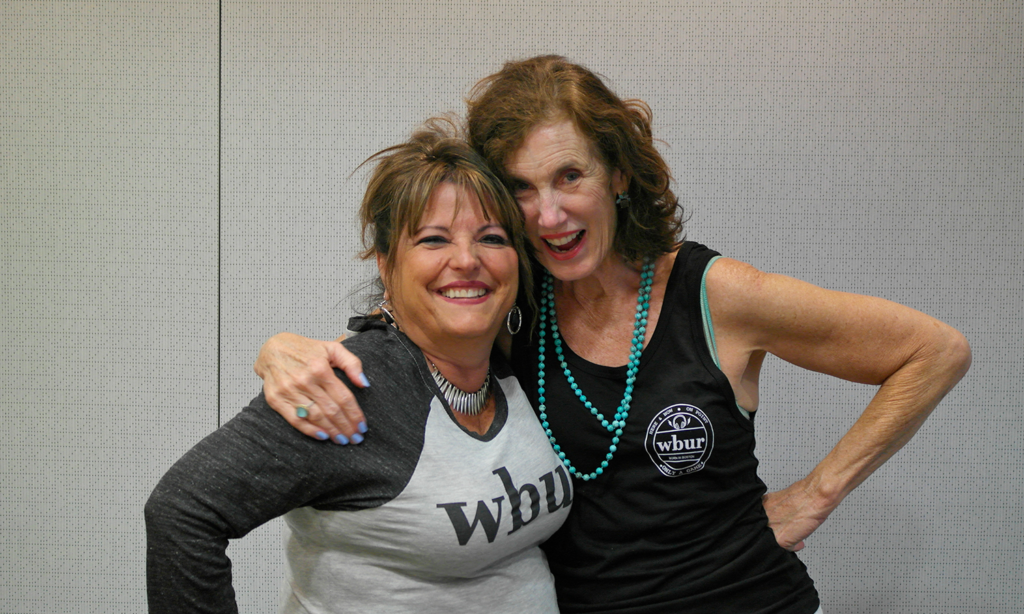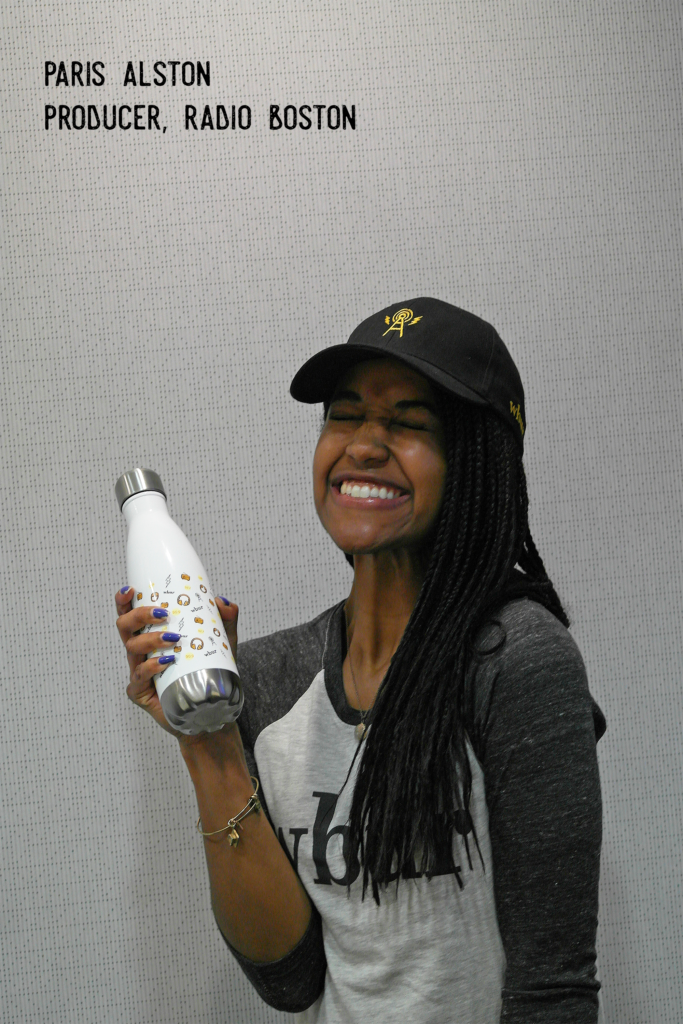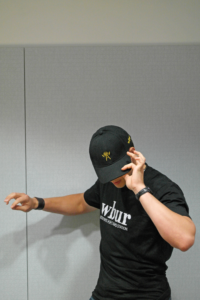Hello!
If you’re reading this for the first time, welcome. This is the second blog post of the WBUR Summer Pop-Up Shop series, covering the marketing and promotions of the website. The store itself launched on July 24th, 2018, with an estimated run time of exactly one month.
The promotion plan comprised of creating a message and visual style, photography and videos to designed to engage buyers, and a broad communication plan.
We launched the campaign with the slogan: “Broadcast your love for WBUR.” This slogan made its way onto the website and every marketing material we had. The aesthetic was a beach background with the merchandise on top of it. Our logo took a fun spin on the serious WBUR brand.
To give our buyers a feel for WBUR, and to create an emotional connection with the staff who work on our shows, I took photos of staff members of WBUR wearing the merchandise. Having real employees as the models highlighted the quality of merchandise and the fit of the shirts, and showed audiences the faces of people that worked so hard behind the scenes. Here are a few of the shots.
During the summer, BizLab connected with behavioral economist Erez Yoeli and heard about his research that has found that in order to increase altruistic giving or engagement with a non-profit, it is essential to eliminate plausible deniability. In his example, plausible deniability means seeing a Salvation Army bell ringer in front of the grocery store and promptly exiting out the back entrance, with the excuse that “I never saw him!” With our marketing campaign, we wanted to put the word out in as many channels as possible to reach WBUR listeners to reduce plausible deniability. We used these channels to get our word out to the constituency:
- Email to Members, Donors, and Events lists
- On-Air Promotions
- In-Podcast Promotions
- Social Media (Facebook, Twitter, Instagram)
- Native Ads on www.wbur.org
- Events and Guerrilla Marketing
- Google Ads Words
In terms of email, we split our campaign up between dedicated emails to existing lists and designed ads that were dropped into other email promotions. We dropped our ad in our daily email “WBUR Today” (25,000 subscribers), “WBUR Tomorrow” (2,000 subscribers), Cognoscenti (27,000 subscribers), and Commonhealth (25,000 subscribers), which went out every day of the week except for Sunday for the entirety of the campaign.

We then directly emailed our events newsletter (8,000 subscribers) for the launch and one-week remaining date of the shop. Continually, we sent a dedicated email for the launch and one week remaining to our sustainers (17,000 subscribers) and sent one dedicated email each to half of our entire membership (35,000 subscribers each). We also sent two dedicated emails to the people who filled out the google form, one to say that their items were available, and one to remind those who had not ordered yet that their time was running out. On the last day of our campaign, we sent an email to every single person who had ever clicked the link to the shop.
For our On-Air promotions, we started the campaign with 4 10-second mentions a day, with a total of 108 mentions from July 24th through August 20th. During the last week of the shop, we increased the amount of mentions from 4 times a day to once an hour, totaling 59 times in 4 days. The copy for the spots changed every week from announcing the pop-up shop to an urgent call to action for the last days of the shop. Additionally, we wrote copy for 15 second pre-rolls in our podcasts, and got 86,000 impressions from them, targeted to listeners downloading in Massachusetts.
We ran multiple paid and unpaid social media campaigns. Starting with Facebook, we ran 7 campaigns that ranged from single images to carousels and videos. In total, our paid Facebook garnered 158,158 impressions and reached 49,920 people. For the last two weeks of the shop, we added boomerangs and videos to our instagram story (8,000 followers) daily, including a count down for the last week of the shop. Continually, we utilized our WBUR Extra twitter (1,000 followers) for a little trip I took to Scotland and brought along my merchandise. For a few tweets, we got retweeted by the WBUR account (74,000 followers).
On WBUR’s website, we have space for ads for membership and underwriting. We placed an ad for the pop-up shop on the top banner ad of the website on a rotating basis, and also added another ad on a different spot on the website. This made it possible for listeners that had heard the on air promotions find an actual channel to get to the store without having to type it in themselves. We found that the banner ad on the top of the website was one of the top performing sources of conversion for our shop.
In an added effort to get people interested in the merchandise, we created printed pop-up postcards, which had a QR code that scanned to the website as well as the URL to the shop. We handed these out at the WERS Wicked Good Music Festival and displayed the merchandise in our tent.
Finally, we used our Google AdWords account to place ads for phrases such as “wbur shop,” allowing us to optimize SEO for the shop.
In order to understand which marketing channels were most effective, I added UTM parameters to every URL we promoted. Every purchase made in the shop was tracked back to the marketing channel.
To see the results of our experiment, tune in to my third and final post!






